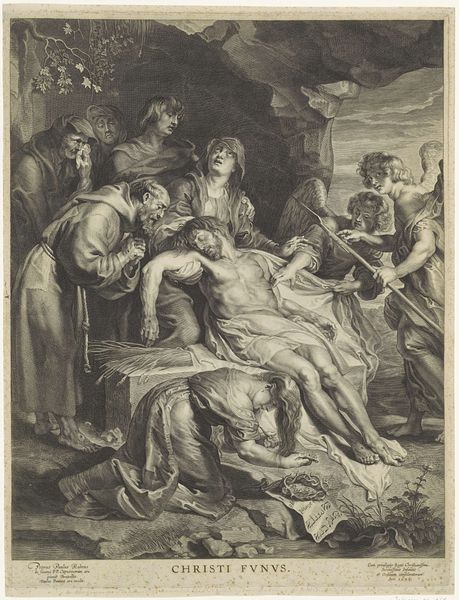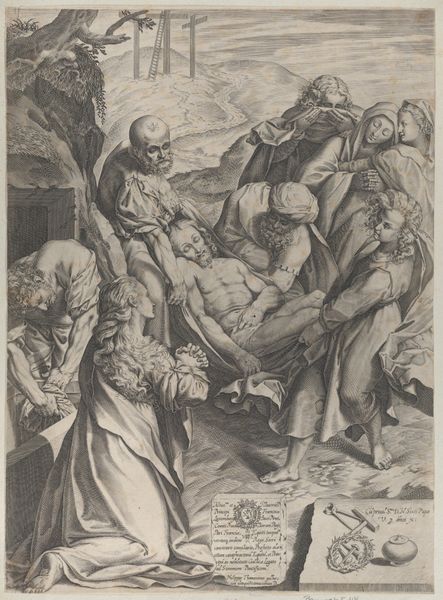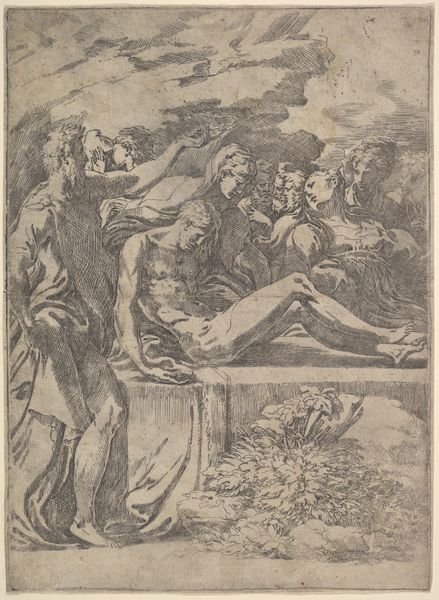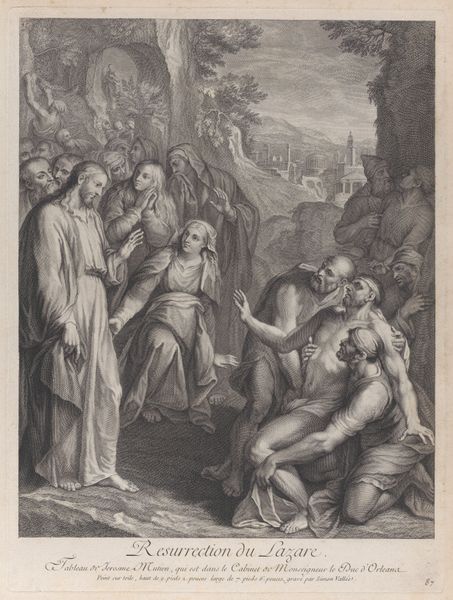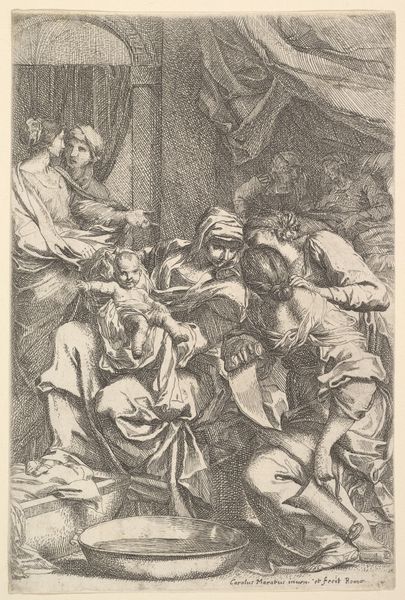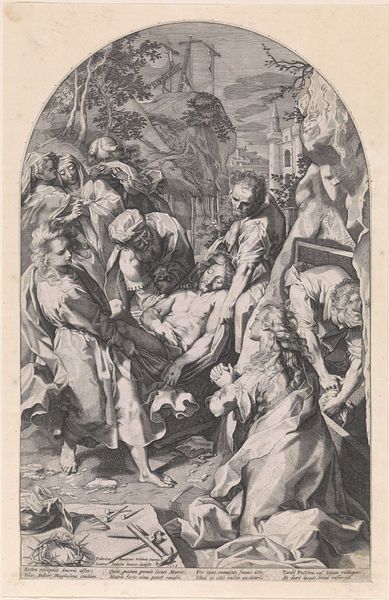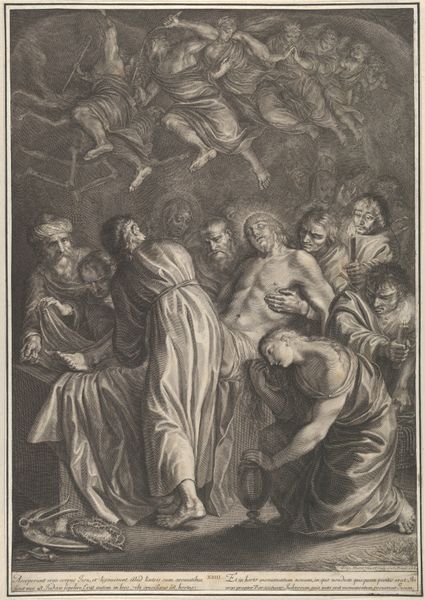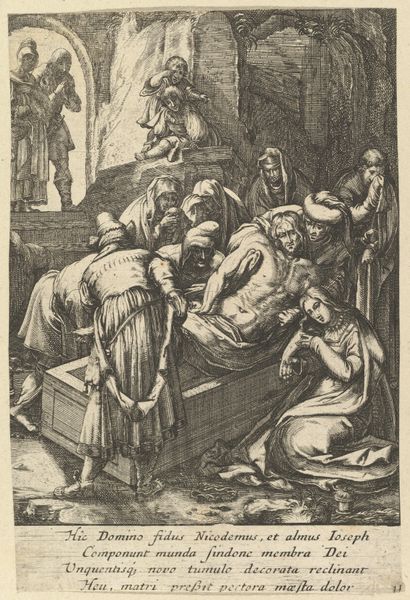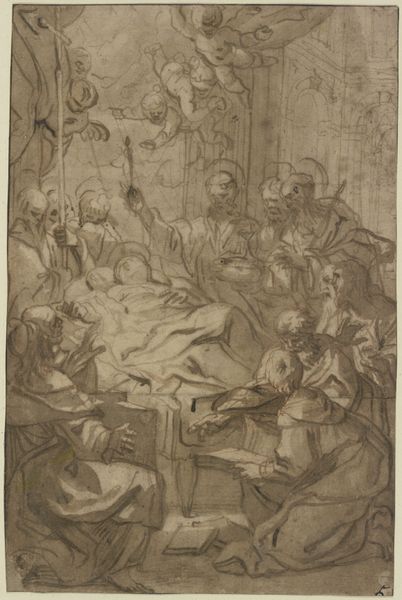
The Lamentation with Saint Francis and Two Angels 1603 - 1658
0:00
0:00
drawing, print, engraving
#
drawing
#
narrative-art
#
baroque
# print
#
figuration
#
history-painting
#
engraving
Dimensions: Sheet: 19 3/16 × 14 15/16 in. (48.8 × 38 cm)
Copyright: Public Domain
Curator: Look at this engraving, "The Lamentation with Saint Francis and Two Angels," made sometime between 1603 and 1658 by Paulus Pontius. It’s currently held at the Metropolitan Museum of Art. Editor: It strikes me immediately as incredibly dramatic. The stark contrast between light and shadow really emphasizes the grief. What is this moment in the scene telling us? Curator: It portrays the emotional aftermath of Christ's crucifixion, set within a cave tomb. Paulus Pontius highlights the grief of the figures surrounding Christ. We see Saint Francis, the angels, and other mourning figures gathered around Christ’s body. Editor: There’s a complex web of iconographic cues. Saint Francis is easy to spot due to his characteristic friar's robe and tonsure. The angels are visually interesting. They hold Christ tenderly but with what seems to be also, ironically, a weapon or a tool. How does Saint Francis enter into this picture? Curator: Saint Francis experienced stigmata later in his life. His inclusion places an emphasis on empathy and shared suffering, which were critical in counter-reformation ideology. To create that bridge between human suffering and the divine realm. Editor: That resonates powerfully. The positioning of the figures around Christ forms this intimate circle, like they're guarding a sacred space of sorrow. It almost feels like an emotional tableau vivant. The "CHRISTI FVNV," at the base only enforces the dramatic sense of death and lament. Curator: These prints played a crucial role during the period. Reproductions spread ideas, devotion, and stylistic trends rapidly. Prints made religious art accessible to a far wider audience, reinforcing established social and religious beliefs and often reflecting patronage from influential orders like the Franciscans. Editor: Looking closer, even the landscape around the figures, especially those plants growing around the foot of Christ, almost become symbols of resilience and renewal. The overall emotional intensity creates this lingering feeling of collective mourning and spiritual meditation, linking us to centuries of shared feelings. Curator: Indeed. And considering that this was widely distributed, one can only imagine the effect that "The Lamentation" had on viewers throughout Europe. Editor: It makes one pause and consider not only the emotional weight of the depicted event but the history embedded in its circulation.
Comments
No comments
Be the first to comment and join the conversation on the ultimate creative platform.
